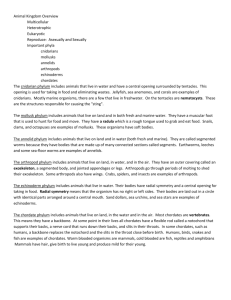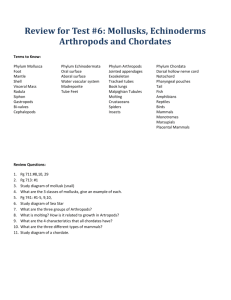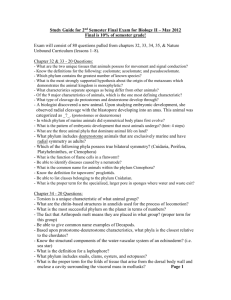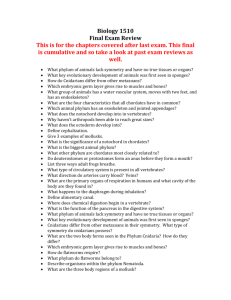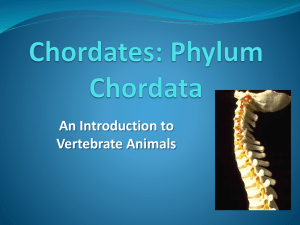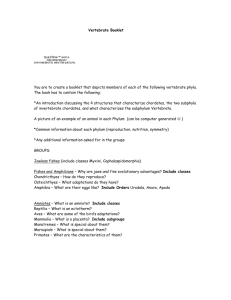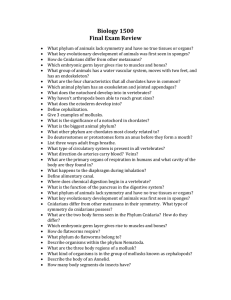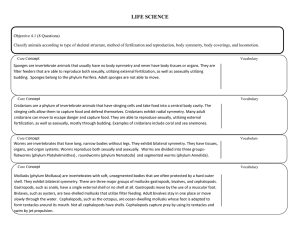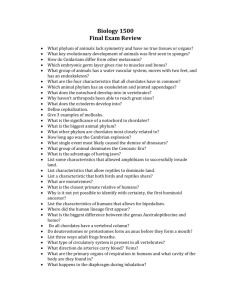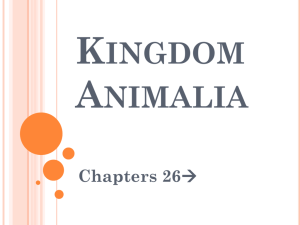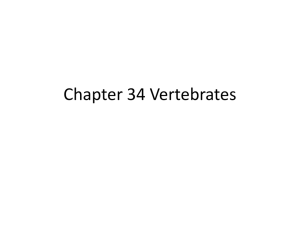Discover Biology 5th Ed Anu Singh
advertisement
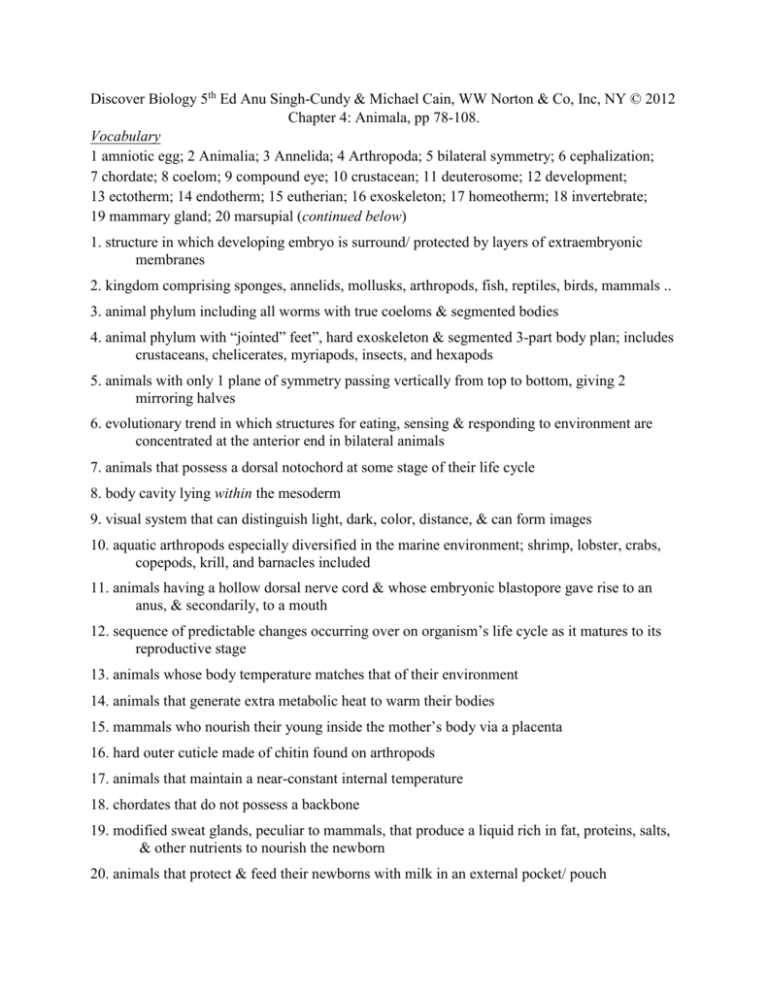
Discover Biology 5th Ed Anu Singh-Cundy & Michael Cain, WW Norton & Co, Inc, NY © 2012 Chapter 4: Animala, pp 78-108. Vocabulary 1 amniotic egg; 2 Animalia; 3 Annelida; 4 Arthropoda; 5 bilateral symmetry; 6 cephalization; 7 chordate; 8 coelom; 9 compound eye; 10 crustacean; 11 deuterosome; 12 development; 13 ectotherm; 14 endotherm; 15 eutherian; 16 exoskeleton; 17 homeotherm; 18 invertebrate; 19 mammary gland; 20 marsupial (continued below) 1. structure in which developing embryo is surround/ protected by layers of extraembryonic membranes 2. kingdom comprising sponges, annelids, mollusks, arthropods, fish, reptiles, birds, mammals .. 3. animal phylum including all worms with true coeloms & segmented bodies 4. animal phylum with “jointed” feet”, hard exoskeleton & segmented 3-part body plan; includes crustaceans, chelicerates, myriapods, insects, and hexapods 5. animals with only 1 plane of symmetry passing vertically from top to bottom, giving 2 mirroring halves 6. evolutionary trend in which structures for eating, sensing & responding to environment are concentrated at the anterior end in bilateral animals 7. animals that possess a dorsal notochord at some stage of their life cycle 8. body cavity lying within the mesoderm 9. visual system that can distinguish light, dark, color, distance, & can form images 10. aquatic arthropods especially diversified in the marine environment; shrimp, lobster, crabs, copepods, krill, and barnacles included 11. animals having a hollow dorsal nerve cord & whose embryonic blastopore gave rise to an anus, & secondarily, to a mouth 12. sequence of predictable changes occurring over on organism’s life cycle as it matures to its reproductive stage 13. animals whose body temperature matches that of their environment 14. animals that generate extra metabolic heat to warm their bodies 15. mammals who nourish their young inside the mother’s body via a placenta 16. hard outer cuticle made of chitin found on arthropods 17. animals that maintain a near-constant internal temperature 18. chordates that do not possess a backbone 19. modified sweat glands, peculiar to mammals, that produce a liquid rich in fat, proteins, salts, & other nutrients to nourish the newborn 20. animals that protect & feed their newborns with milk in an external pocket/ pouch (continued) 21 metamorphosis; 22 Mollusca; 23 molting; 24 monotreme; 25 notochord; 26 pharyngeal pouch; 27 placenta; 28 protostome; 29 radial symmetry; 30 sexual reproduction; 31 simple eye; 32 tetrapod; 33 vertebrate 21. multistep developmental process in which animals’ immature forms change into adults 22. animal phylum characterized by a muscular foot at body’s base, a visceral mass, & a mantle 23. process in which animals’ cuticle covering is shed to allow more rapid growth 24. nonplacental egg-laying mammals having a common opening for the anus & urinary tract 25. strong but flexible bar of large cells running dorsally along animals’ length providing support 26. found in chordates’ early embryos as pockets on either side of the pharynx 27. structure formed by embryonic tissues & maternal tissues combined to provide extensive blood supply for nutrition & waste removal 28. animals having bilaterality in their life cycle, 3 embryonic cell layers, a mouth from the blastopore, & experience cephalization with an anterior brain & ventral nervous system 29. bodies that can be sliced symmetrically along any number of vertical planes passing through the center of the animal 30. fusion of egg & sperm cells (fertilization) to produce genetically unique offspring 31. visual system that can distinguish light & dark & sometimes distance & color 32. terrestrial vertebrates with 4 limbs 33. chordates that possess a backbone
